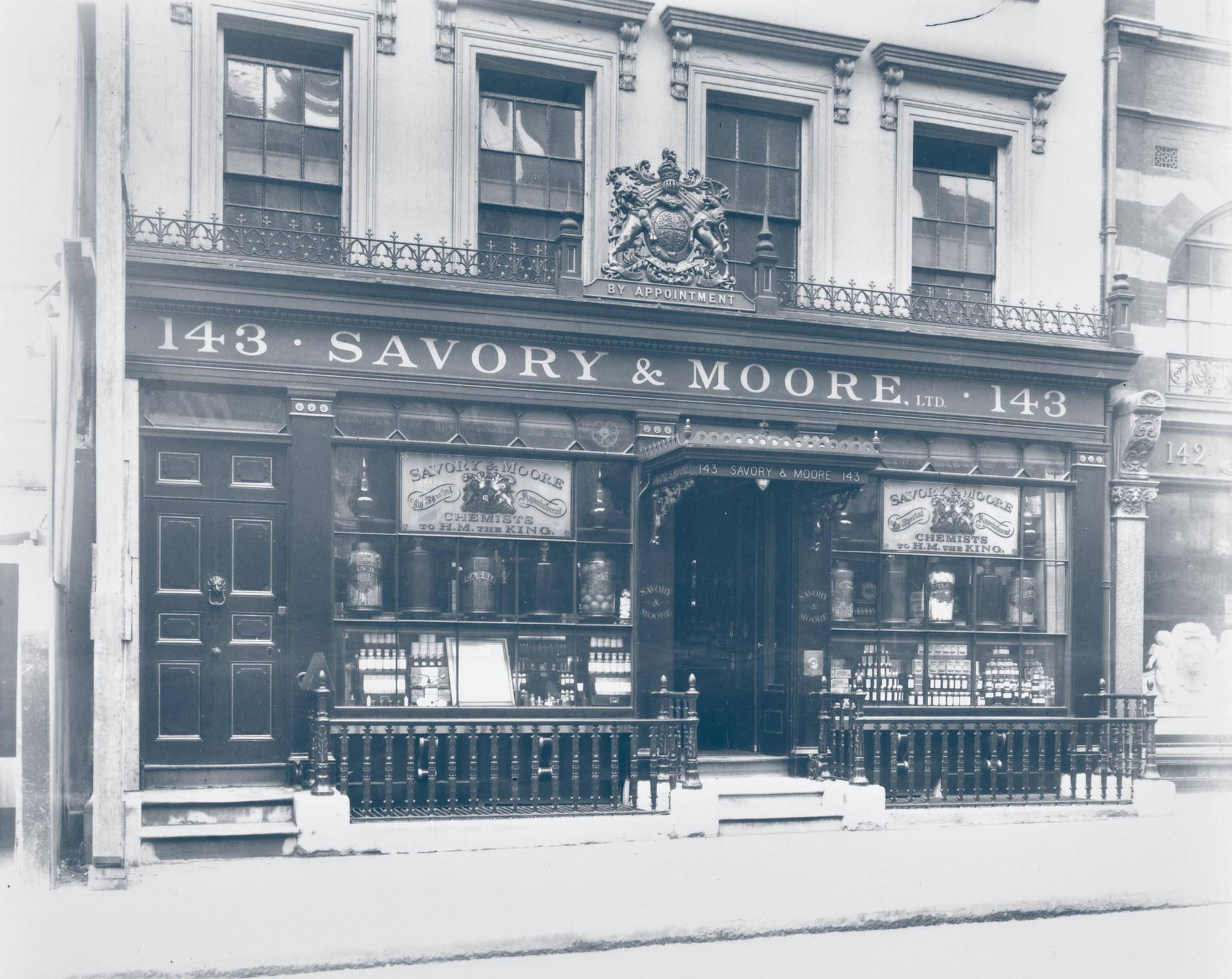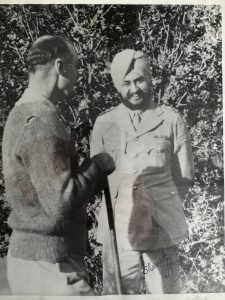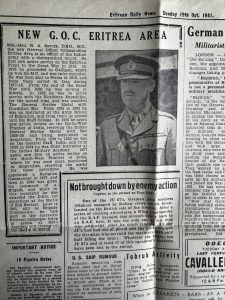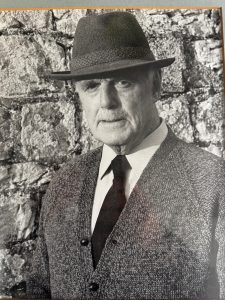-
Place of Death
Surrey
Reginald Arthur Savory (known as ‘Reggie’, ‘Reg’ & ‘Uncle Reg’) was the twin (and elder) brother of Kenneth Savory. They were very different in many respects, Reg being the smaller in stature, the more conformist by nature and the less enamoured of parties and the sort of social life that Ken so enjoyed. They had, however, two important things in common: these were an infectious laugh and a joyful approach to life.
Reg always wanted to go to Winchester College, like his father before him, but instead was sent to Uppingham, which he loathed. He was therefore taken away and sent to a small crammer school in Germany at Alte Burg near Hanover. From there he went to Sandhurst, passing out high in 1913, which enabled him to elect for the Indian Army. After a year’s attachment to the Duke of Wellington’s Regiment, he was posted to the 14th Ferozepore Sikhs shortly after the outbreak of World War I.
The 14th Sikhs were destined for the Western Front but were disembarked at Suez and then sent to reinforce the army at Gallipoli. Reg had by then joined them and was soon in the thick of it. After one attack on the Turkish trenches he was wounded. When he came to, he found that his body was being used as an aiming rest by a couple of Turkish soldiers. He was eventually carried to safety by a Sikh, but was reported killed in action. However, by the time his father (Arthur Ledsam Savory) wrote to the Commanding Officer of the 14th Sikhs requesting the return of Reggie’s personal possessions, Reggie was the only officer left with the Regiment, the rest having been either killed or wounded. Reg therefore wrote to his father, assuring him he was alive and well. With his typical puckish humour he could not resist signing himself:
“I have the honour to be, Sir
Your obedient servant.
R.A. Savory. 2/Lieut.
Officer Commanding, 14th K.G.O. Sikhs”
After the evacuation of Gallipoli, the 14th Sikhs were sent to the Persian Gulf where they saw more action as well as later in Mesopotamia. They were still there when the war ended in 1918. After the excitements he had been through, Reg found peacetime rather dull, so when the opportunity arose he volunteered for service in Vladivostok in East Russia, where the Allies were attempting to bolster up the White Russians against the Bolsheviks. After a brief spell of leave in the UK, he returned to his Regiment and with them saw service on the N.W. Frontier (1921), Iraq (1922) and Kurdistan (1923). From 1915 to 1923 he had been almost continuously on active service.
Next came a spell at the Indian School of Education, followed by the Staff College course at Camberley, Surrey, before another period of active service, this time again on the N.W. Frontier of India. After a tour of duty at Army H.Q. India in Simla, he was selected to be one of those responsible for setting up the Indian ‘Sandurst’ of Dehra Dun. There he became a great influence on the future commanders of the armies of India and Pakistan.
By the outbreak of World War II in 1939, he was commanding the I/II (Ludiahana) Sikhs (the successors of the 14th Sikhs) at Chittagong in Assam, at a time of severe internal disturbance. He was then appointed to command the 11th Indian Brigade of the 14th Indian Division and with them took part in Wavell’s campaign against the Italians in the Western Desert. From there, the Division was switched to Abyssinia where there was some further hard fighting, particularly at Karen. In 1942, he was appointed G.O.C. Eritrea, before being recalled to India to form a new Division (the 23rd Indian Division). By now he had been promoted to the rank of Major General. He chose the Fighting Cock at it’s emblem, so not to offend the Divisions Muslim or Hindu soldiers.
The 23rd Indian Division was soon on active service in Assam against the Japanese who were then threatening to invade India. This was Reg’s last active service appointment before before being appointed to Army H.Q. India as Director of Infantry. His experience as a front line soldier in two World Wars and on the Frontier of India made him an ideal choice for this important job, which enabled him to play a vital role in preparing the infantry for the successful campaigns they fought under Field Marshal Slim.
In 1945, he was promoted to Lieut. General and appointed General Officer Commanding (G.O.C.) Persia and Iraq Command, before taking up his final task as the last Adjutant General of the old Indian Army. As such it fell to him to sign the last Indian Army Order. Drafted by his own hand, it simply said: “This is the last India Army Order“. It served as the administrative epitaph for the largest volunteer army in history.
Reg retired from the army in 1948. For his distinguished military services he had been awarded the:
- Military Cross (M.C.) in 1916;
- Distinguished Service Order (D.S.O.) in 1941;
- Companion of the Order of the Bath (C.B.) in 1944; and
- Knight Commander of the Indian Empire (K.C.I.E.) in 1947.
He had also been mentioned in despatches no less than seven times.
He had for a long time dreamt of becoming a farmer after he had retired from the army. To this end he had, just before the outbreak of World War II, purchased a dairy farm at East Anstey in North Devon, which his wife, Myrtle, managed throughout the years of the war. However, shortly after retiring, Reg sold the farm and moved to Winsford on Exmoor. He there embarked on quite a different career. By 1952/53, he was Deputy Lieutenant of the County of Somerset, Chairman of the Somerset Territorial and Auxiliary Forces, a County Councillor, a battalion commander in the Home Guard and a Justice of the Peace (J.P.).
By 1960, Reg had given up his many responsibilities in Somerset, and, in his own words, “retired for a second time”. He and Myrtle left Winsford and Reg embarked on yet another career, this time a military historian. After much research he published, in 1966, his book, His Britannic Majesty’s Army in Germany during the Seven Years’ War. This book filled a significant gap in military history and is the definitive work on its subject.
In 1965, Myrtle died. They had been married in 1922. She was then a widow, with a son and a daughter.
In 1968, Reg paid a long visit to India, staying for much of the time with his old friend, H.H. The Raja of Faridkot, the last ruler of the State of Faridkot. In between he paid many visits to the Sikhs, who treated him royally wherever he went.
In 1969, he re-married. His second wife was Maria McIwrith (née Zurabova), whom he had first met in Vladivostok nearly 50 years earlier. On that occasion he was one of those responsible for helping the Zurabova family to escape from the advancing Bolsheviks. As the family prepared to embark, Maria’s mother gave Reg a claret jug, one of her last possessions, for helping to rescue her family. On his marriage, Reg gave the jug back to Maria.
In about 1970, he put forward the idea that there should be a permanent memorial to the post 1914 Indian Army. The result was the insertion of three stained glass windows in the Indian Army Museum at Sandhurst. Practically the entire cost of the windows was raised by Reg.
In the last few years of his life he devoted much of his time to sorting out the many papers, records and diaries that he had kept throughout his long and distinguished career. These papers are now lodged in the National Army Museum.
He died on 14th June 1980. His lasted recorded words, said to Maria as he was placed in an ambulance on his way to hospital, were: “Happy…Happy”.
There is a memorial to him in St Laurence Church in Seale, near Farnham, Surrey.
Web reference of Reginald Savory:





